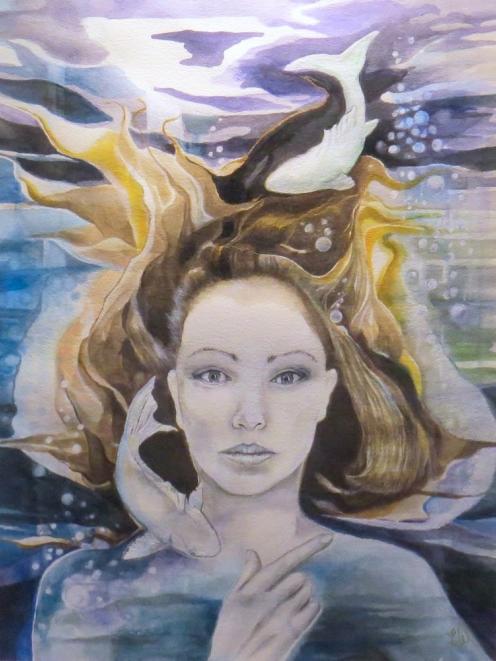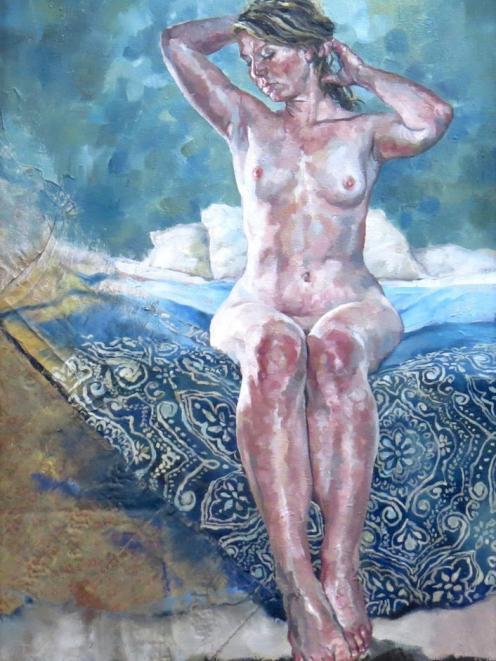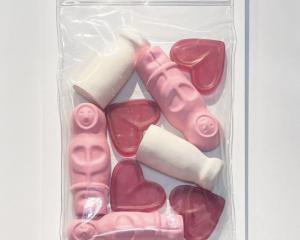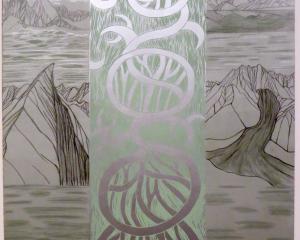In this week's Art Seen, James Dignan looks at exhibitions from Lorna Watkins-Dooley, Richard Killeen, and Matt Gauldie.
 Sub, by Lorna Watkins-Dooley
Sub, by Lorna Watkins-Dooley

"Sub Rosa'', Lorna Watkins-Dooley (Koru Gallery)
Lorna Watkins-Dooley's exhibition at Koru Gallery explores religion, myth and the connectedness between humans and nature in a series of painted works. Several of the pieces draw on traditional religious themes and concepts, ranging from Hinduism to Islam, but the majority focus more loosely on religion and more directly address the broader concept of spirituality.
The pieces are predominantly watercolours, with the emphasis on gentle images in muted tones which stress composition over boldness. In works such as Sub and Miriam, the paintings manage to avoid the potential trap of cliche by their inner strength, gained by the careful arrangement of their component parts. The symbolism of the calla or arum lily - used in art to represent the Virgin Mary - is in several of the works, including Miriam, Miriam's Lilies and the cameo Small Lily. Despite this, Watkins-Dooley's Miriam/Mary is not a standard image of a Christian mother of Christ, but is instead a Tarot-like representation of a woman in touch with her occult darkness.
In other works, such as Falcon - inspired by Maori legend - and Cycles, Watkins-Dooley's graphic skills come to the fore. Although these pieces are also watercolour, they have the feel of graphite works, dominated by strong line work.

"Rhizome'', Richard Killeen (Brett McDowell Gallery)
Richard Killeen's seemingly inscrutable works constantly suggest the esoteric messages of a deep personal symbolism. Working with a catalogue of hieroglyphic images, which he mixes and matches to create pieces laced with hidden narrative, Killeen has created a series of fascinating printed works on plywood.
The title ``Rhizome'' is telling. It refers not so much to root tendrils, but rather to the philosophical concept of rhizomes - thought images - and particularly the idea that an idea can be entered at any point of its development, and still provide links to other ideas. In Killeen's work, this connects with the seemingly random, but actually deliberate juxtapositions of images which spark ideas in the viewers' mind. The works, though seemingly simplistic, thus provide endless trigger-points for contemplation and thought.
Like all artists, Killeen's path to his current style is long and convoluted, as can be seen in a handful of 1970s paper works also on show. These works give an indication of Killeen's earlier influences, most specifically Gordon Walters, the recent subject of a major retrospective at the Dunedin Public Art Gallery. Killeen's comb-like forms relate to Walters' koru works in style, and give us the jumping-off point from which Killeen began his quest for juxtaposition of form and message.

"A Light in the Darkness'', Matt Gauldie (The Artist's Room)
Painter Matt Gauldie has two distinct, seemingly disparate, strings to his artistic bow. As official war artist for the New Zealand Army, Capt Gauldie has recorded its work in Afghanistan and the Solomon Islands, as well as creating powerful images relating to our military history. His more personal work focuses on a strikingly different subject, the female nude.
In the current exhibition, there are a few images of old soldiers at Anzac services, presented to coincide with yesterday's commemoration. However, it is the nudes that take centre stage. They are beautifully depicted, using strong, expressive strokes in strong but effective colour. Lighting is impressively handled and the play of shadow becomes a major component of images such as Spirit Rising and Anita. Other works, such as Studio Nude 6, rely on lighting to highlight their subject against a deep shadowy background, producing the ``light in the darkness'' of the exhibition's title. Attention is drawn away from the dark, yet a close inspection reveals the beautiful detail work of the shaded floor.
As if that wasn't enough, Gauldie's work stretches to include a lovely bronze nude statuette, its pose vaguely reminiscent of Napier's famous Pania of the Reef.







![Untitled (c. mid 1990s, [pink 3]), by Martin Thompson, 415mm×590mm. Photo: courtesy of Brett...](https://www.odt.co.nz/sites/default/files/styles/odt_landscape_small_related_stories/public/story/2024/02/untitled_pink_3.jpg?itok=Q0aQrc9o)




